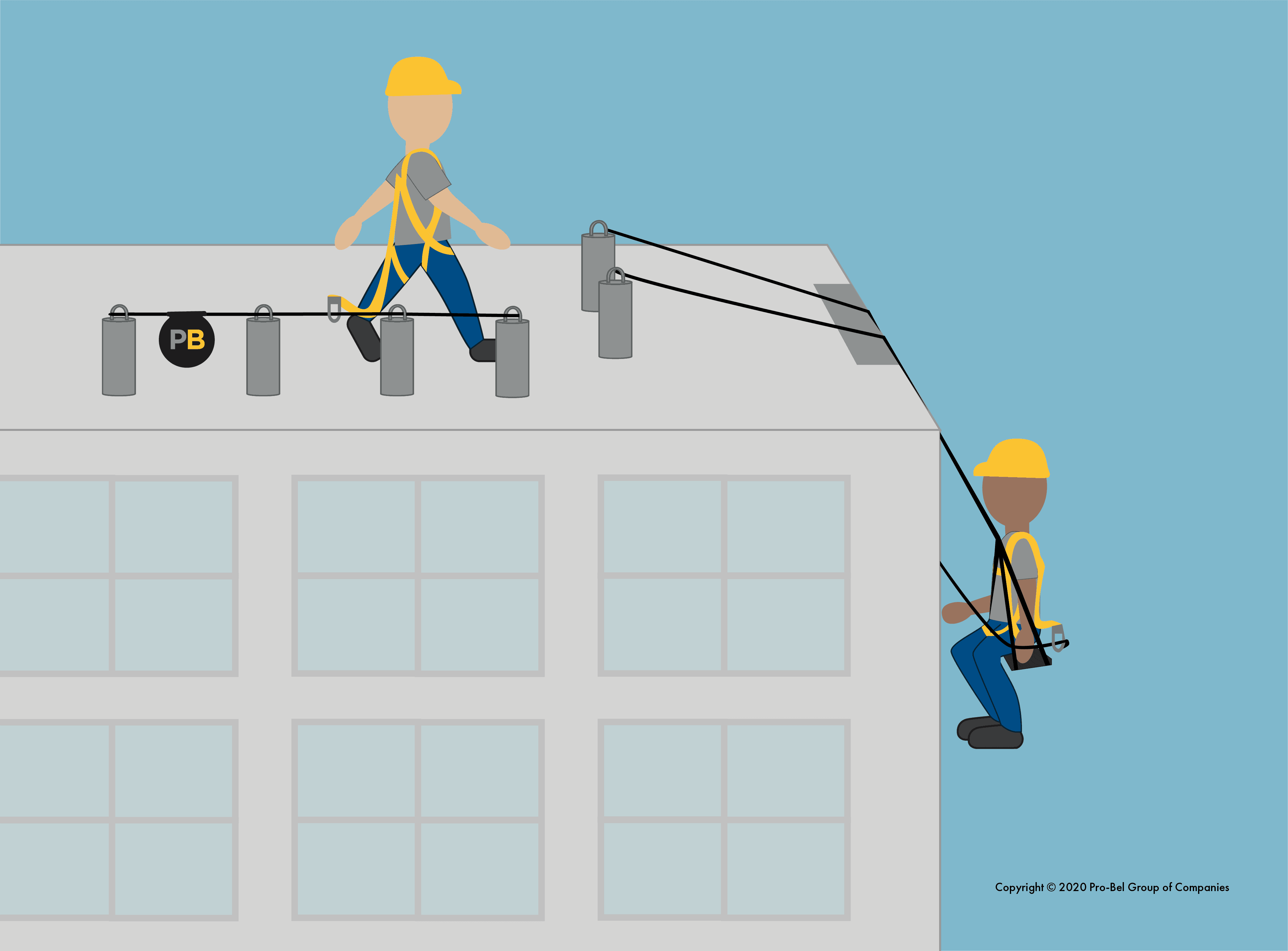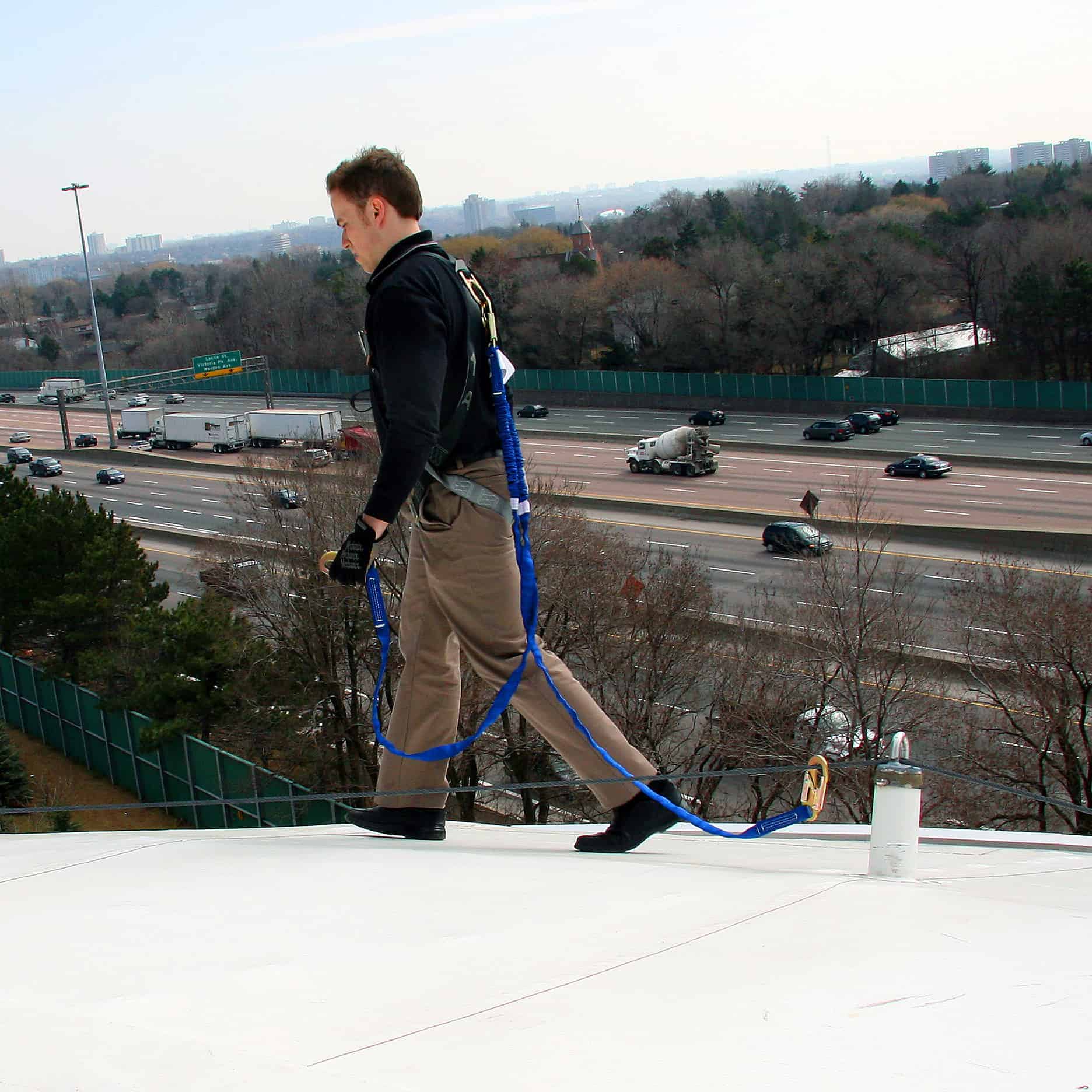Confused about whether your project needs Fall Protection? Read on for a quick guide!
Above all else, it’s essential to understand what fall protection is and why it’s so vital.
Fall protection is the term for a collection of safety measures outlined in the region’s relevant standards and regulations, such as OSHA, for maintenance workers, window washers, and others who work at heights. These safety measures can include horizontal lifelines, guardrails, Davit arms, and more.
Considering that falls are one of the top 4 causes of fatalities in construction in the US (as per CY 2018, Federal OSHA), it’s pretty clear that fall protection needs to be taken very seriously.
Types of Fall Protection Systems
Fall Protection can be either passive or active. A passive system does not require personal protective equipment or worker participation. The most common example of a passive fall protection system is guardrails.
Conversely, an active system requires direct action and control by workers to be effective. As the majority of fall protection is active, active fall protection can be further divided into two other major types: Fall Arrest and Fall Restraint.
Fall Restraint
Fall Restraint systems prevent falls from occurring. The perfect example is a Horizontal Lifeline system; when maintenance workers are working close to a drop-off, such as near the edge of a rooftop, they are required to clip their safety harnesses and lanyards to the horizontal lifelines, which will prevent them from reaching the edge and falling.
Fall Arrest
Fall arrest systems will stop a fall once it has occurred. The most common examples are Safety and tie-back anchors. Workers tie off to the anchors when working near the roof's edge so that if an accidental fall happens, the anchors will arrest the fall, interrupting it and allowing the worker to safely hang for up to 30 minutes while awaiting emergency personnel to arrive.
Fall Restrict
One more type of fall protection system is primarily only found in Canada: Fall Restriction. A fall restriction system is a subcategory of Fall Arrest, but the main difference is that a Fall Restricting system is designed to limit a fall to a shorter distance.
For example, if maintenance work is required right at the roof edge, a fall restricting system will provide access to the area by still allowing a worker to fall but limiting the distance of the fall to the area near where the worker needs to access. You can think of it as similar to a rock climber rappelling their way down a cliff edge.
In the case of a fall restriction system, the installed fall protection system must come with a lanyard equipped with a shock absorber to limit the force placed on the worker, ensuring that the worker will not suffer injury from the sudden stop.
Notably, in the USA, a fall-restricting system is just referred to as Fall Arrest and is not considered a separate system.

The illustration above demonstrates a fall restraint system (horizontal lifeline) and a fall arrest system (safety and tieback anchors with Bosun’s chair). All fall protection scenarios require personal protective equipment and standard safety equipment, such as a safety harness, lanyards, D-rings, and lifelines.
Determining Factors:
In Canada, if any section of the parapet wall is less than 36 inches and a worker is subject to a 10ft fall, Fall Protection is required.
In the USA, Fall Protection is required if any section of the parapet wall is less than 42 inches and a worker is subject to a 4ft fall.
Fall Restraint systems provide access to and from hazard zones, which are defined as any area within 2m (6ft 6in) of a drop.
Whether you’re an architect, general contractor, or building owner, fall protection is a vital concept to remember from the very beginning. Ensuring the correct fall protection systems are designed for each building requires close collaboration between architects, general contractors, building owners, workers, and fall protection providers.
At Pro-Bel, we design, engineer, manufacture, supply, install, and inspect fall protection systems. Our expertise in industry codes and regulations provides comprehensive liability protection to all parties involved.
If you have any other questions or need more information on a specific system, contact us!
Share this Post


